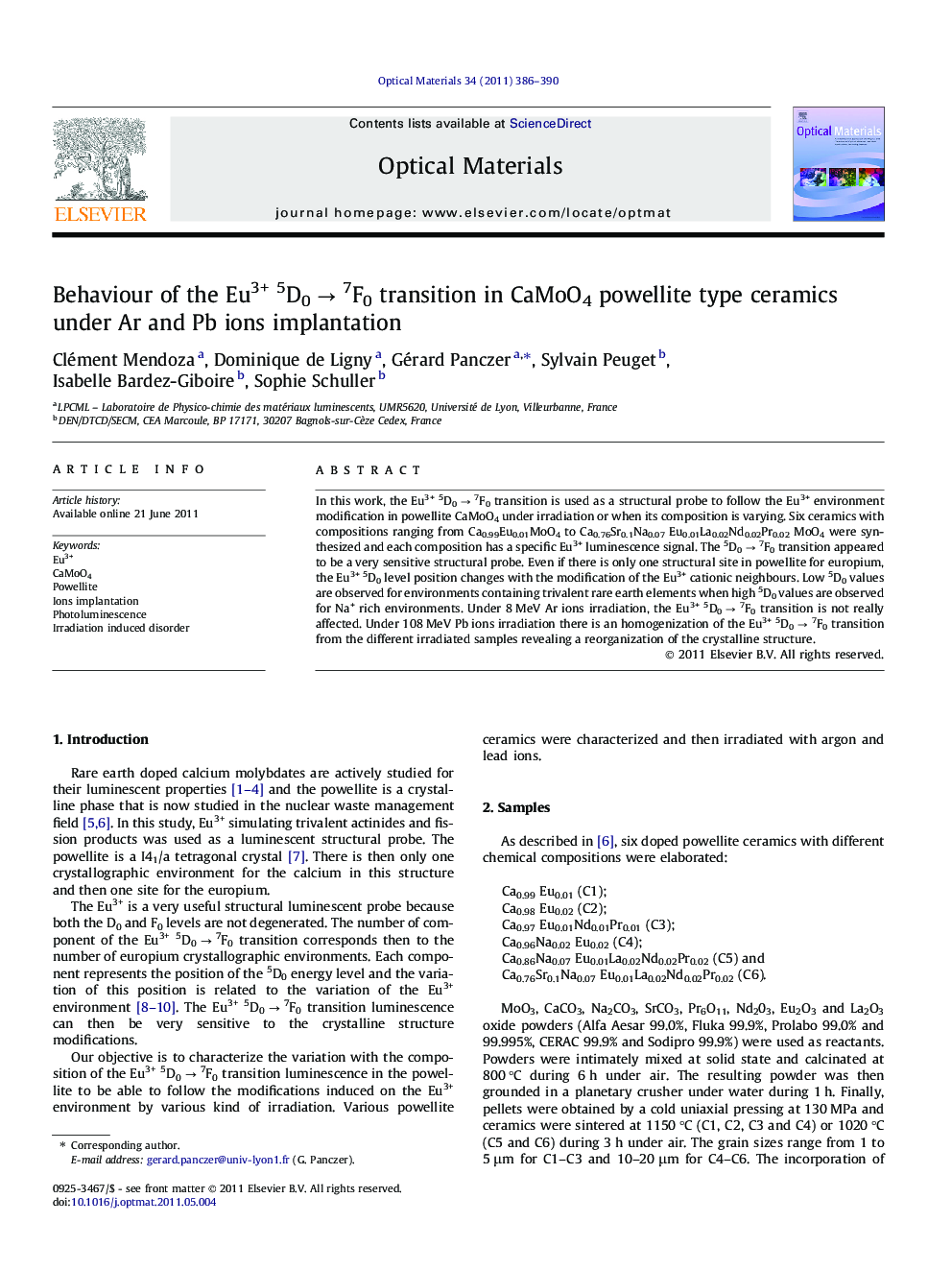| Article ID | Journal | Published Year | Pages | File Type |
|---|---|---|---|---|
| 1494675 | Optical Materials | 2011 | 5 Pages |
In this work, the Eu3+5D0 → 7F0 transition is used as a structural probe to follow the Eu3+ environment modification in powellite CaMoO4 under irradiation or when its composition is varying. Six ceramics with compositions ranging from Ca0.99Eu0.01MoO4 to Ca0.76Sr0.1Na0.07 Eu0.01La0.02Nd0.02Pr0.02 MoO4 were synthesized and each composition has a specific Eu3+ luminescence signal. The 5D0 → 7F0 transition appeared to be a very sensitive structural probe. Even if there is only one structural site in powellite for europium, the Eu3+5D0 level position changes with the modification of the Eu3+ cationic neighbours. Low 5D0 values are observed for environments containing trivalent rare earth elements when high 5D0 values are observed for Na+ rich environments. Under 8 MeV Ar ions irradiation, the Eu3+5D0 → 7F0 transition is not really affected. Under 108 MeV Pb ions irradiation there is an homogenization of the Eu3+5D0 → 7F0 transition from the different irradiated samples revealing a reorganization of the crystalline structure.
► The Eu3+5D0 → 7F0 transition is used as a structural probe in CaMoO4. ► Eu3+ environment is modified under irradiation. ► Modifications are low after a 8 MeV Ar ions irradiation. ► Under 108 MeV Pb ions irradiation there is an homogenization of the environments. ► High electronic damages are leading to a reorganization of the crystalline structure.
